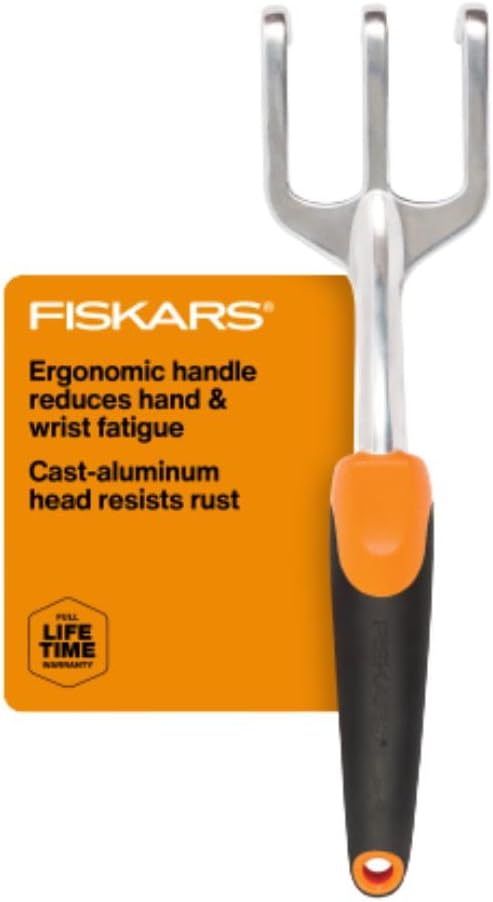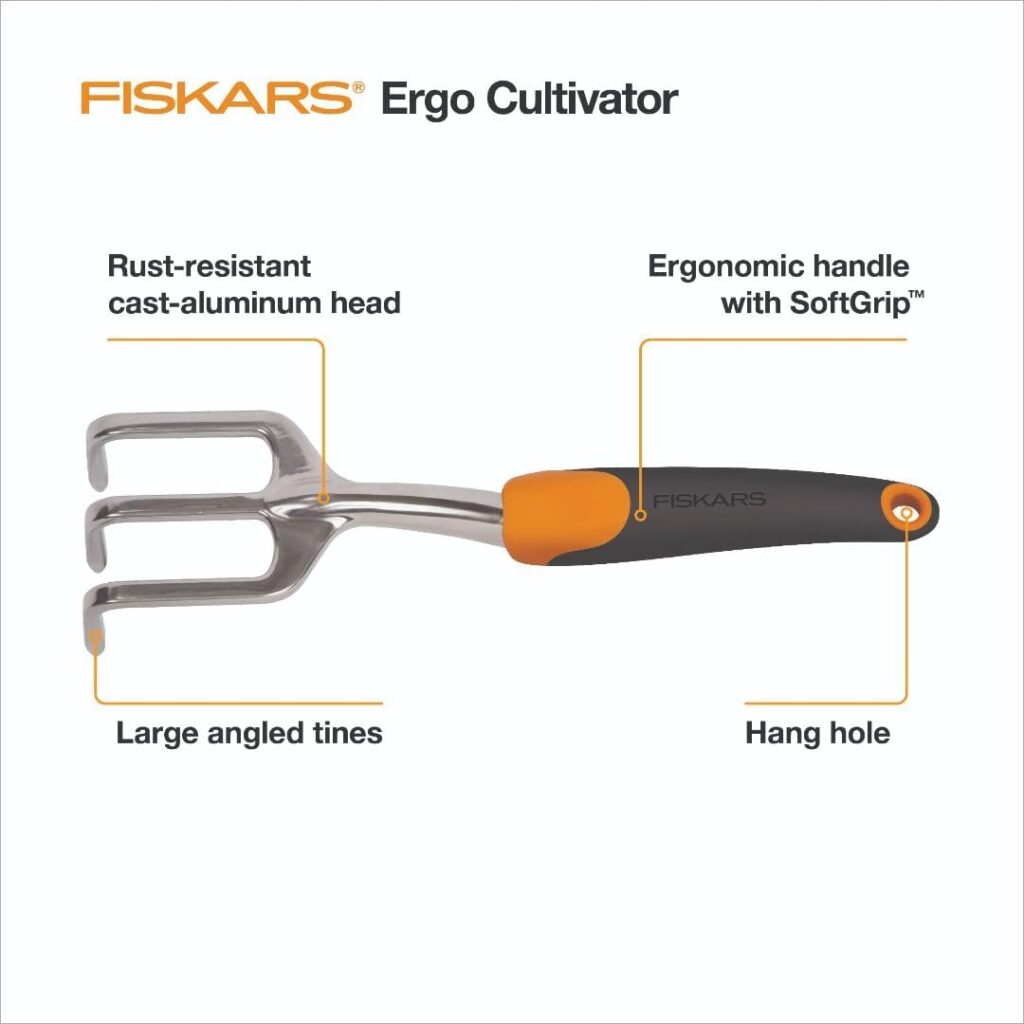I’ve been working in my vegetable patch long enough to know that some tools make life easier, while others just end up sitting forgotten in the shed. When I first picked up the Fiskars Ergo Cultivator, I didn’t expect it to change much—I already had a few hand forks and thought they’d do the same job. But after using it for a few weeks, this little tool earned a permanent spot in my gardening tote.
The first thing I noticed when I held it was the SoftGrip handle. It’s not just marketing fluff—it really does reduce strain on the hand. I’ve had issues before with blistering after long sessions of breaking up tough soil, but with this one I felt a lot more comfortable. The handle curves naturally in the palm, and I didn’t find myself shifting grip every five minutes like I usually do.

Performance-wise, it’s got three sharp, sturdy steel prongs that dig into compacted soil without bending. I tested it after a light rain, where the soil was heavy and clumpy, and it sliced in smoothly. On dry days, when the ground feels like concrete, it took a bit more elbow grease but still broke things up better than my old cheap cultivator. I also used it around some rooty patches near my blackberry canes, and the claws got in between roots nicely without damaging the plants.
One detail I appreciated was the hanging hole at the end of the handle. It’s simple, but it means I can store it right by my potting bench instead of throwing it in a bin where tools get buried. Small thing, but it keeps the tool handy.
Now, let me break down some of the good and bad I’ve noticed while using it.
Pros
- Comfortable SoftGrip handle that reduces hand strain.
- Strong steel prongs that don’t bend, even in hard soil.
- Works well for digging, aerating, and uprooting weeds.
- Handy hanging hole for easy storage.
- Lightweight enough for long use without fatigue.
Cons
- Doesn’t go deep enough for larger weeds with very long roots.
- Handle length is fine for most tasks, but in deep raised beds you sometimes wish it were a couple inches longer.
Back to the real experience: one afternoon I used it while reworking the soil in my raised bed before planting fall lettuce. Usually, that job takes me a good while and leaves me with sore fingers. This time, I just raked the cultivator back and forth, and the soil fluffed up nicely without much effort. It’s not magic—you still have to work—but it’s a noticeable difference. Later, when pulling out a patch of crabgrass that popped up between my onions, the cultivator’s claws dug right under the roots so I could pull them clean out. That’s when I realized it’s not just for loosening soil, but also doubles as a weeding tool.

Another thing worth mentioning is durability. I’ve broken a few bargain-brand cultivators before, especially when I get stubborn and try to pry out rocks. With this Fiskars, the steel prongs didn’t budge. The paint scratched a little after hitting stones, but that’s just cosmetic. I’d rather see scuffs than worry about snapping a tine mid-job.
Overall, the Fiskars Ergo Cultivator is one of those tools that doesn’t look flashy, but it just works. It’s sturdy, comfortable, and versatile. Sure, it won’t replace a long-handled hoe or a heavy-duty digging fork, but for close-up soil work, raised beds, or weeding between plants, it’s a reliable hand tool that saves time and effort.
If you’re someone who spends hours tending vegetables, herbs, or even small flower beds, this cultivator will earn its keep quickly. It’s not oversized, doesn’t try to do more than it should, and that’s exactly why it’s a keeper in my set.